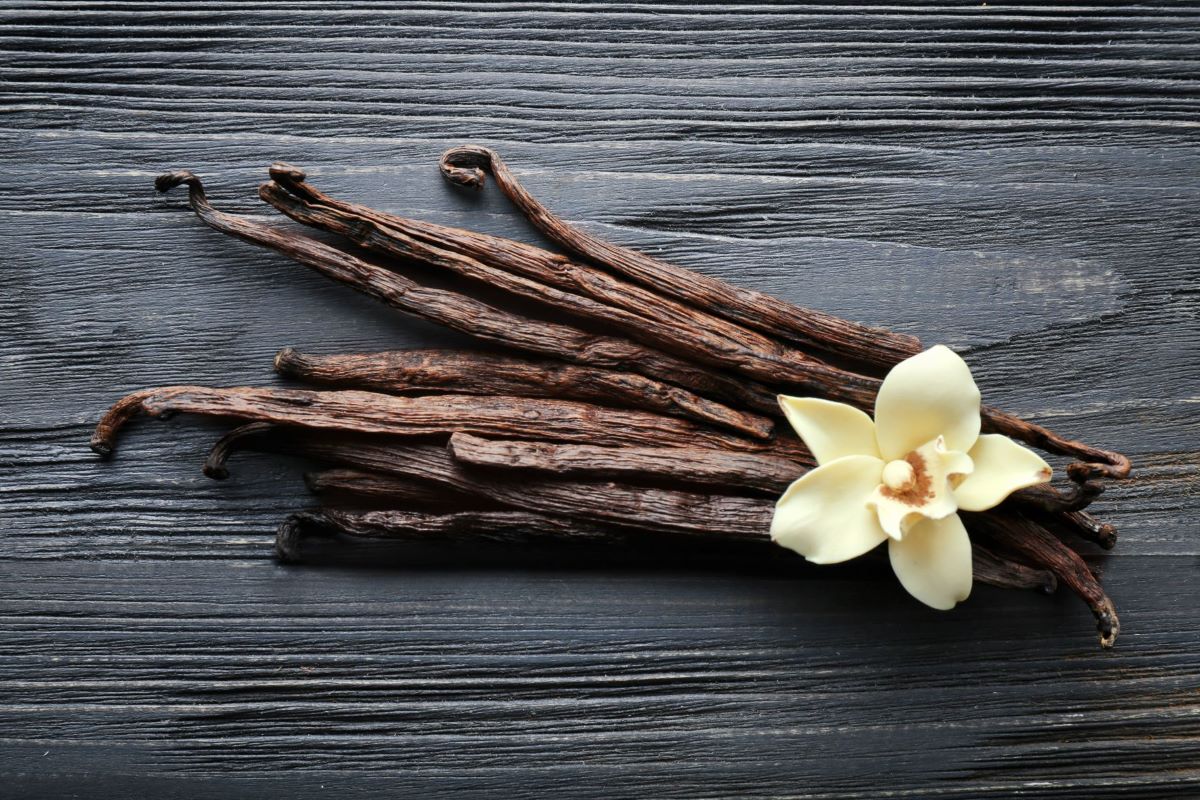Vanilla is one of the most universally loved and popular flavors around the world Its sweet, aromatic taste enhances everything from ice cream to perfume But what exactly is a vanilla bean, and is it considered a fruit? As it turns out, the answer is more complex than you might think.
An Orchid Fruit
Vanilla beans come from orchids in the genus Vanilla, primarily the species Vanilla planifolia. Vanilla is the only edible fruit produced by orchids, which is the largest family of flowering plants with over 25,000 species.
There are over 150 varieties of vanilla orchids, but only 2 species are primarily used for vanilla production – V. planifolia and V. tahitensis. These vine-like orchids produce thin pods called vanilla beans. So in botanical terms, yes, a vanilla bean is considered a fruit!
Vanilla Bean Anatomy
The vanilla bean fruit develops from the orchid flower once it is pollinated. The beans grow 7-10 inches long in long green pods on the vine. Inside the pod are thousands of tiny black vanilla seeds.
As the pods ripen, their color changes from green to yellow. At this stage, they are harvested by hand and cured through a months-long process that turns them into the dark brown vanilla beans we are familiar with.
The curing process develops the beans’ distinctive vanilla flavors and aromas from the organic compounds contained inside This is why cured vanilla beans have a much stronger flavor than the green pods
What Makes Vanilla Beans Unique
Vanilla is the second most expensive spice in the world after saffron This is because vanilla orchids can only be pollinated and bear fruit in their native growing regions near the equator Vanilla is very labor-intensive to cultivate and produce.
There are over 150 different flavor compounds inside natural cured vanilla beans, giving each variety its own unique aromatic and taste profile. Just like different wine grapes, no two vanilla beans are exactly the same!
The primary flavor compound is vanillin, which gives vanilla its characteristic smell and taste. But vanillin alone cannot reproduce the complex sensory experience of real vanilla. This is why vanilla extracts made from just vanillin taste flat and fake compared to natural vanilla bean extracts.
The Truth About Vanilla Flavoring
Since real vanilla is expensive, most of the “vanilla” flavoring used today is artificial. It is made from synthetically produced vanillin diluted in alcohol, not real vanilla beans. So products that say “vanilla flavored” are not made with natural vanilla.
To know if a product contains real vanilla, you need to check the ingredients for “vanilla extract” or “vanilla beans.” Vanilla extract by law must contain a minimum 35% alcohol and 13.35 oz of vanilla beans per gallon.

Vanilla Bean Substitute
The easiest substitute for whole vanilla beans is pure vanilla extract. The flavor intensity of a bean is much higher than the extract. One inch of vanilla bean is equal to one teaspoon of pure vanilla extract. That means one tablespoon will replace one whole bean; for extra flavor, increase it to two tablespoons. Generally, when a recipe calls for vanilla extract, its measured in teaspoons, though. Adding tablespoons can change the way your food tastes and feels, so you’ll need to cut back on another liquid by one or two tablespoons. You would need even more imitation vanilla extract to match the flavor of a whole bean.
Vanilla bean paste is another substitute, though its not as common as the extract. Again, use 1 tablespoon of the paste to replace 1 whole vanilla bean. Since theres not as much moisture in the paste, you may not have to adjust the recipes liquids.
How to Cook With Vanilla Bean
Preparing a vanilla bean is easy. For most recipes, cut the bean in half lengthwise with a sharp knife, making sure to leave the bottom whole. Then scrape the seeds out and incorporate them into the recipes other ingredients. You can add vanilla flavor to milk, cream, or sugar with the outer pod. This is also a good way to use old, dried vanilla beans. For recipes that call for whole beans, cut off the ends and chop up the rest. You can save the ends for vanilla infusions if you want to.
You can also use whole beans to make your own vanilla extract. Its an easy infusion but takes about two months for the flavor to develop. Another option is to use them to make vanilla bean paste. Its a faster process but does require more work. This can be used as a replacement for either vanilla bean or vanilla extract in many recipes. It also retains the little black flecks that make vanilla bean recipes beautiful.
If the beans dry out, they can be rehydrated. Soak them in milk or warm water for several hours.
:max_bytes(150000):strip_icc()/vanillabeans-many-vanilla-beans---viele-vanielleschoten-502034989-6da6d5b16c21458d99d5eca7841c9761.jpg)
:max_bytes(150000):strip_icc()/scraping-vanilla-seeds-out-of-vanilla-bean-1076809542-dd68caf8f66d49f0931015f4f4efcae7.jpg)
:max_bytes(150000):strip_icc()/vanilla-and-vanilla-beans-on-a-spoon-macro-677970402-2c2e3389731e4ab1a8f51df320b2bad1.jpg)
:max_bytes(150000):strip_icc()/directly-above-shot-of-vanilla-extract-in-bowl-on-white-background-746097029-4a8306513638449eb9b965f4ac9a66c8.jpg)
:max_bytes(150000):strip_icc()/homemade-white-frosted-vanilla-cupcakes-1054754152-a049f98450f948dd8c69567750726043.jpg)
:max_bytes(150000):strip_icc()/rice-pudding-672126948-b61a8a34f8d84a1a803fffc6d9b57a01.jpg)
Vanilla Is The 2nd Most Expensive Spice. So Why Do Madagascar’s Farmers Live In Poverty?
FAQ
Is A vanilla A bean or a fruit?
What makes vanilla a fruit?
Is vanilla extract a fruit or a Vegetable?
What is a vanilla bean?
